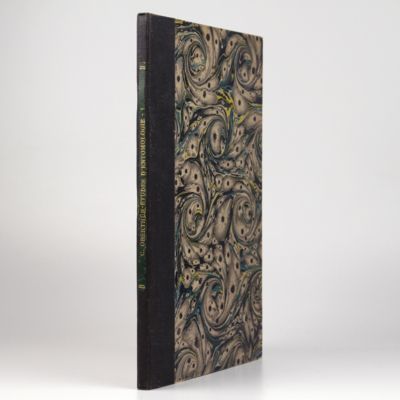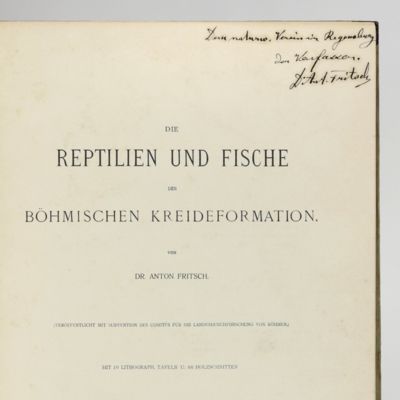First publication on the best-preserved meteorite crater in the USA
Barringer, D. M.
Meteor Crater in Northern Central Arizona.
Published
1909
Item ID
56510
€600.00
Philadelphia, PA, the Academy of Natural Sciences, 1909. Tall 4to (31.3 x 20.1 cm). 24 pp.; 18 plates, three maps. Original printed wrappers.
First publication, by the owner of the site, the mining engineer Daniel M. Barringer (1860-1929), on the best-preserved meteorite crater in North America, and perhaps in the world, variously known as the Barringer Crater, Canyon Diabolo Crater, or Meteorite Crater. The last name now prevails. "The crater was created about 50,000 years ago during the Pleistocene epoch, when the local climate on the Colorado Plateau was much cooler and damper. The area was an open grassland dotted with woodlands inhabited by mammoths and giant ground sloths. The object that excavated the crater was a nickel-iron meteorite about 160 ft (50 m) across. The speed of the impact has been a subject of some debate. Modelling initially suggested that the meteorite struck at up to 45,000 mph (20 km/s), but more recent research suggests the impact was substantially slower, at 29,000 mph (12.8 km/s). In 1902 Barringer learned of the existence of a large (1.5 km in diameter) crater, located 35 miles east of Flagstaff, Arizona. The crater ... had previously been studied by the geologist Grove Karl Gilbert in 1891. Gilbert had hypothesized that the crater must have been the result of either a gas explosion or a meteorite. After performing experiments in the crater, however, Gilbert's conclusion was that the crater could not be the result of an impact, and therefore could only be the result of an explosion. He concluded this despite the clear presence of thousands of small meteoritic particles in the vicinity of the crater. Upon hearing of the existence of the crater and the meteoritic iron, Barringer became convinced that the crater was of meteoritic origin. With both scientific and monetary aims in mind, Barringer created the 'Standard Iron Company' in order to mine the crater for the iron that he assumed must be buried below its surface. The Standard Iron Company conducted drilling operations in and around the crater between 1903 and 1905, and concluded that the crater had indeed been caused by a violent impact. It was unable to find the meteorite, however. In 1906, Barringer and his partner, the mathematician and physicist Benjamin C. Tilghman, presented their first papers to the U.S. Geological Survey outlining the evidence in support of the impact theory [this paper] ... By the late 1920s, Barringer had convinced most of the scientific community that his impact theory was correct. The theory has been further confirmed with new evidence since then, most notably by Eugene Shoemaker during the 1960s. The mining of the crater continued until 1929 without ever finding the ten-million-ton meteorite that Barringer assumed must be hidden. By this point Barringer had spent over $600,000 with no iron profits to show for it, nearly bankrupting him. At this time the astronomer Forest Ray Moulton performed calculations on the energy expended by the meteorite on impact, and concluded that the meteorite had most likely vaporized when it landed. Barringer died of a heart attack on November 30, 1929, shortly after reading the very persuasive arguments that no iron was to be found.
read more
He was survived by his wife, Margaret Bennett, and eight children, who, with their descendants, formed the Barringer Crater Company, which owns the site to this day as a family business" (Wikipedia). Barringer wrongly assumed that the nickel-iron meteorite core would be present below the crater floor. His paper was read before the National Academy of Sciences at Princeton University, and published in the Academy's Proceedings, of which the present copy is a rare offprint. Ex library copy with two labels and a small stamp on the front wrapper. Wrapper spine partly split with some loss at the extremities, small cut in lower outer corner of the front wrapper. Text, maps and plates fine. ADDED: By the same author, 'Further Notes on Meteor Crater, Arizona'. Proceedings of the Academy of Natural Sciences of Philadelphia (1914). Large 8vo. 11 pp.; three maps. Disbound. Text and plates fine. Cat. BM(NH) Supplement, p. 60 [the main work].
read less
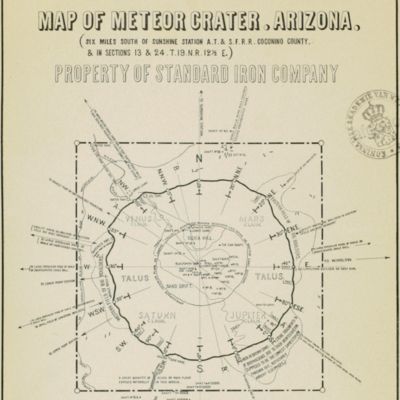

![image for Tijdschrift van het Aardrijkskundig Genootschap, gevestigd te Amsterdam. Eerste Deel [Journal of the Geographical Society in Amsterdam, Volume 1].](https://schierenberg.nl/media/cache/product_thumb/67342/67342.jpg)
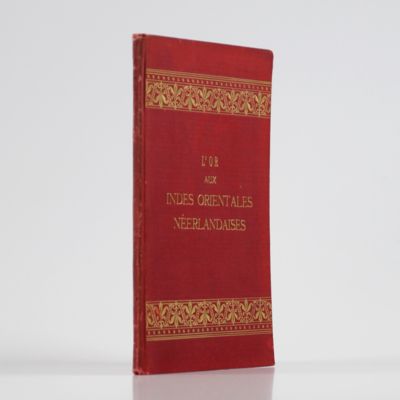
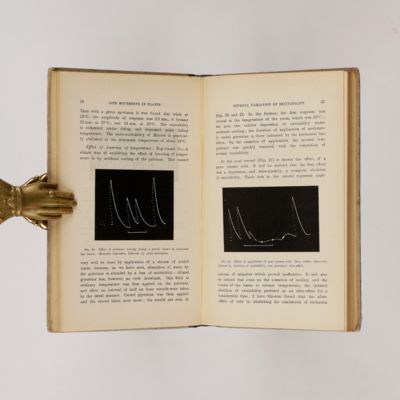
![image for Natuurlyke en naar 't leeven naauwkeurig gekleurde afbeeldingen en beschryvingen der cicaden, in alle vier waerelds deelen Europa, Asia, Africa en America huishoudende, by een verzameld en beschreeven. /Représentation exactement colorée d'après nature des cigales, qui se trouvent dans les quatre parties du monde, l'Europe, l'Asie, l'Afrique et l'Amerique rassemblées et décrites [BOUND WITH] Natuurlyke en naar 't leeven naauwkeurig gekleurde afbeeldingen en beschryvingen der wantzen, in alle vier waerelds deelen Europa, Asia, Africa en America huishoudende, by een verzameld en beschreeven. /Représentation exactement colorée d'après nature des punaises, qui se trouvent dans les quatre parties du monde, l'Europe, l'Asie, l'Afrique et l'Amerique rassemblées et décrites.](https://schierenberg.nl/media/cache/product_thumb/57758/57758_x.jpg)
![image for [Original watercolour sketches of French landscapes]](https://schierenberg.nl/media/cache/product_thumb/70046/70046_x.jpg)
![image for De Ambonse historie. Behelsende een kort verhaal der gedenkwaardigste geschiedenissen zo in vreede als oorlog voorgevallen sedert dat de Nederlandsche Oost Indische Comp: het besit in Amboina gehadt heeft [AND] De Ambonse historie. Behelsende een kort verhaal der Gedenkwaardigste Geschiedenissen zoo in vrede als oorlogh, voorgevallen zedert de regeering van den Superintendent Commissaris en Adml den wel Ed: Heer Arnold de Vlaming. En Eijndigende onder de Regeering van den Edele Agtb: Heer Jacob Hustard.](https://schierenberg.nl/media/cache/product_thumb/74106/74106.jpg)
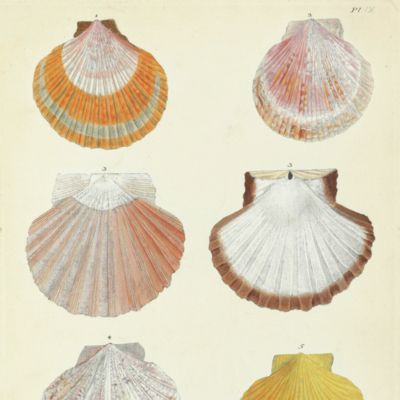
![image for Des tortues fossiles conservées dans le Musée Teyler et dans quelques autres musées. [AND] Deux nouvelles tortues fossiles.](https://schierenberg.nl/media/cache/product_thumb/42527/42527.jpg)
![image for Miscellanea Curiosa sive Ephemeridum Medico-Physicarum Hermanicrum Academiae Imperialis Leopoldinae Naturae Curiosorum. Decuriae II. Annus quintus. [AND] Annus sextus.](https://schierenberg.nl/media/cache/product_thumb/78083/78083_x.jpg)

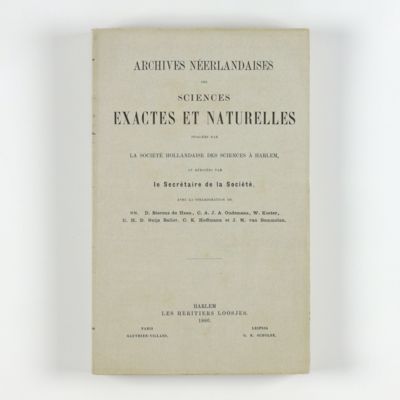
![image for International Indian Ocean Expedition. Collected reprints I-VIII, Index. [Complete].](https://schierenberg.nl/media/cache/product_thumb/17083/17083.jpg)
